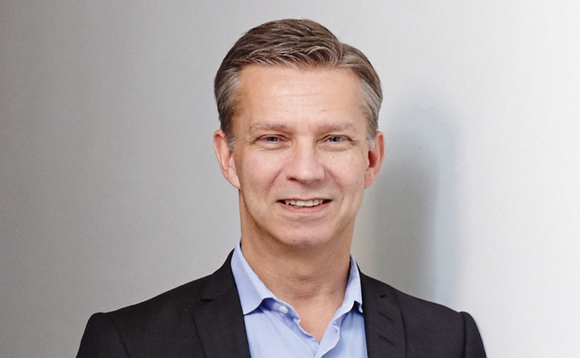
LP Profile: AP6

- 20 active GP relationships
- equal split between fund investing and direct investing
AP6 is the only branch of Sweden's state pension fund with the sole mandate to invest in private equity. CEO Karl Swartling talks to Denise Ko Genovese about the LP's co-investment strategy and the tussle to get GP attention
"There is competition to get access to the best managers," says Karl Swartling, CEO of Swedish LP AP6. "We have around 20 active and forward-looking relationships with private equity houses," he says, adding that the competition works both ways as there is also high demand for the fund's money. But with so many potential new collaborations, the team has to be rigorous and prioritise.
Longstanding relationships include those with Nordic Capital and EQT, which both date back 15-20 years, though it has also committed capital to more than 10 European GPs, including Carlyle Europe, Permira, Bridgepoint, Cinven and HgCapital.
In addition, there are around five GPs on its so called "hunting list", so being open and forward-looking is definitely part of the strategy.
Going back six to eight years, the split was 80% direct investments and 20% funds, but we are now about 50% on each. We are deliberately not trying to compete with GPs [for the same investments]" – Karl Swartling, AP6
To many, the world of LPs is an elusive one, but AP6 is more mainstream than it appears, being a branch of the Swedish state pension system. And although seemingly one of many – there is AP1, AP2, AP3, AP4 and AP6 (AP5 was dissolved) – AP6 is the only one with the mandate of investing purely in unlisted assets, with a focus on private equity. It is also the only fund that is allowed to make direct investments in unlisted and private companies. The others have a much broader remit, across all asset classes.
"AP6 was given roughly SEK 10bn in 1996, which today amounts to around SEK 30bn," says Swartling. "Private equity has been part of the investment scope since inception, and has proven to be a very attractive segment in the alternatives space. During the last five years, AP6 has focused entirely on private equity, within alternative investments."
In the early days, the investment strategy was more local and Nordic-focused, but it has gradually broadened its geographical scope. Today the fund is active across Europe and it has also started to approach the US private equity market.
Dialing down co-investment
Since 2011, the LP has had a clear, two-pronged strategy: committing money to specific funds being raised by private equity houses, and making direct investments in different companies. Earlier, the fund included other alternative asset classes, but is now dedicated to private equity. Within that scope, the fund is active within both primaries, secondaries and direct investments.
While a few years ago, direct investments made up the majority of the fund's activity, as of today, the LP only does minority stake direct investments and the split is closer to 50:50. Swartling is keen to underline that these two strands are not two separate programmes but part of one integrated strategy.
"Going back six to eight years, the split was 80% direct investments and 20% funds, but we are now about 50% on each," says Swartling. "We are deliberately not trying to compete with GPs [for the same investments]."

As LPs chase yield, the market consensus is that co-investment appetite is on the rise. Some GPs admit to not welcoming LPs increasing their capability to invest directly, with some going as far as to say they may reject an LP commitment on this basis.
"We see LPs who do compete with other GPs directly and this potentially causes tension," says Swartling, adding that this has been a visible development, especially among the big Canadian players over the last 10 years or so.
"Making co-investments is a privilege to be earned, not something you can demand as an LP," says Swartling, adding that AP6 would never say no to one of the top performing managers on its "hunting list" simply because co-investment was not on the table.
Co-invest spectrum
"One of our strengths is that we have the flexibility to take part in the whole spectrum of co-investments," says Swartling. AP6 is strong on deliverability, as it has direct investment competences in-house and is capable of running the acquisition as well as the ownership processes.
"GPs generally have a clear picture of how they want to compose a co-investment syndicate," says Swartling. "Many LPs say they want to do co-investment – but not all manage to deliver within the often tight timelines. We know that we can, and want to be seen as a preferred partner for a GP. We are predictable and we say no to deals up front rather than last minute."
At one end, the LP can make a co-investment commitment after the deal has closed, in what Swartling terms "post-signing syndication". This is where a private equity house completes an acquisition by itself but subsequently decides to decrease its exposure and therefore goes to a number of LPs to gauge appetite and deliverability. In this case, AP6 would take three to four weeks to analyse the business and, if it decided to invest, would be a very passive investor without a seat on the board and leaving governance to the GP, explains Swartling.
At the other end of the spectrum, AP6 could be approached by a GP [or a non-GP investment company] that has started to look at a deal it thinks is perfect for a co-investment; at which point AP6 is asked to participate in what Swartling terms a "co-sponsor deal". In this case, AP6 would end up with anything between 15-49% of the investment, a board seat and be very active in governance.
One of our strengths is that we have the flexibility to take part in the whole spectrum of co-investments" – Karl Swartling, AP6
"Co-sponsor deals are one of our strengths as we have the capacity and flexibility to do them. In other situations (post-signings), time is a critical factor and we can reach a decision to participate within two weeks if needed," says Swartling.
The latter is time consuming though, with a high proportion of the LP's resources dedicated to it.
"Roughly two thirds of our investment professionals are focused on direct investing and the other third in fund investing – but this changes over time and almost all new investment projects are cross-staffed with competences from both sides. That is one of our core strengths," says Swartling. There are a total of 30 people working at the standalone Swedish pension fund, of whom around 20 are investment professionals.
Returns
As a pension fund, managing its own capital and liquidity is key to what AP6 does. "We are constantly trying to manage our cash flow," says Swartling, adding that when it was set up, the fund was declared with evergreen status and remains a closed fund.
The fund's overall returns are the net return from GPs plus return on all direct investments – which do not have carry or management fee – minus internal costs. As co-investments are conducted without fee or carry, the cost structure for the combined portfolio is quite attractive, he says.
"In the well-developed partnerships that we have, co-investments add up to as much – or sometimes even more – as we have committed and invested in the specific fund. We can also see that over the last five years, our IRR on co-investments has been very attractive and higher than our net fund returns, reflecting a good selection of deals to participate in and a cost-effective set up, without carry and management fees."
Latest News
Stonehage Fleming raises USD 130m for largest fund to date, eyes 2024 programme
Multi-family office has seen strong appetite, with investor base growing since 2016 to more than 90 family offices, Meiping Yap told Unquote
Permira to take Ergomed private for GBP 703m
Sponsor deploys Permira VIII to ride new wave of take-privates; Blackstone commits GBP 200m in financing for UK-based CRO
Partners Group to release IMs for Civica sale in mid-September
Sponsor acquired the public software group in July 2017 via the same-year vintage Partners Group Global Value 2017
Change of mind: Sponsors take to de-listing their own assets
EQT and Cinven seen as bellweather for funds to reassess options for listed assets trading underwater








